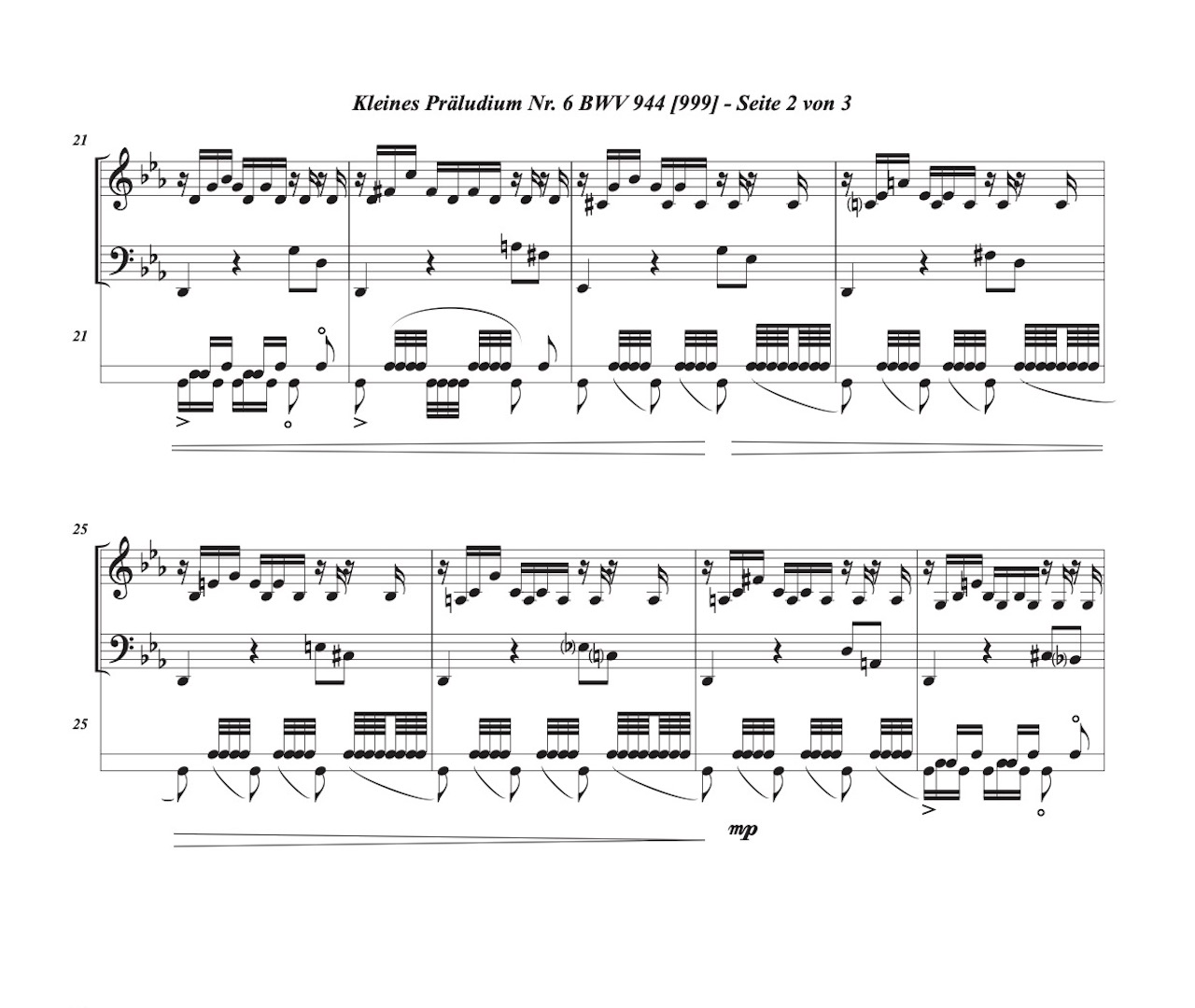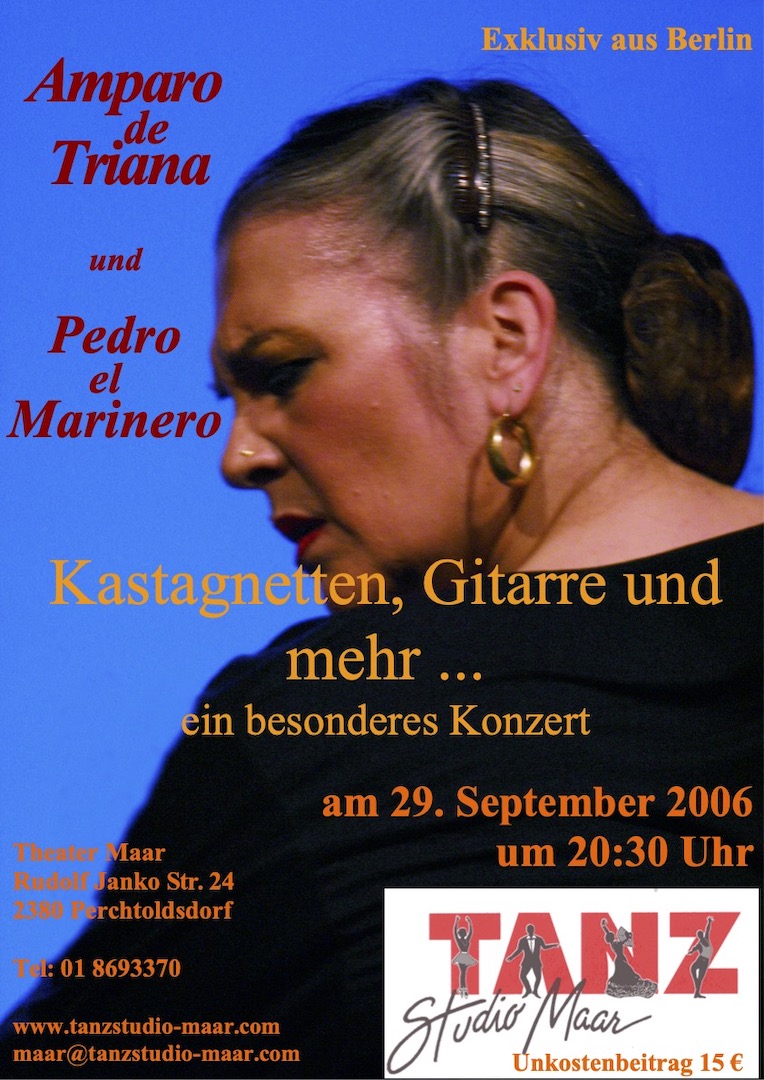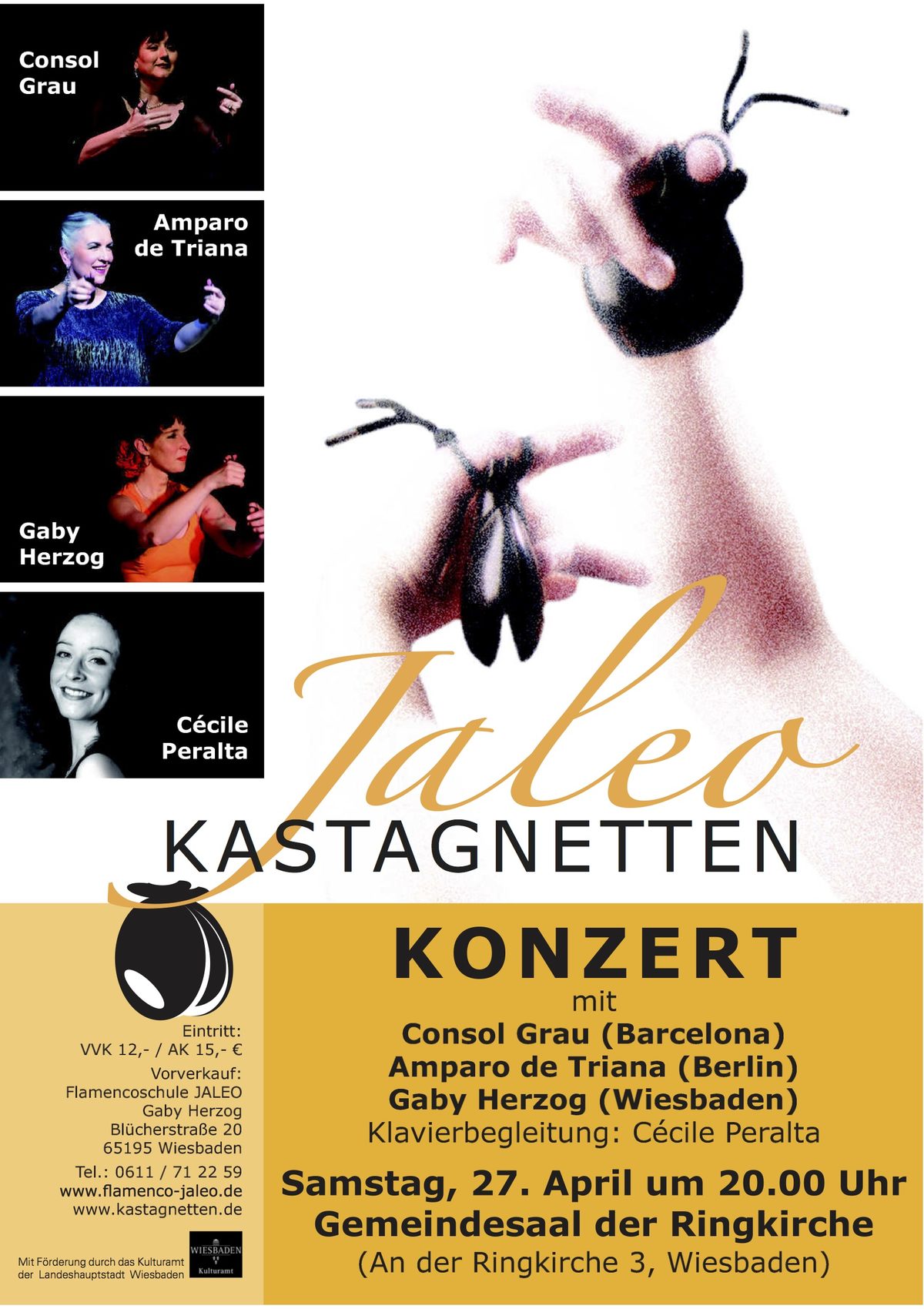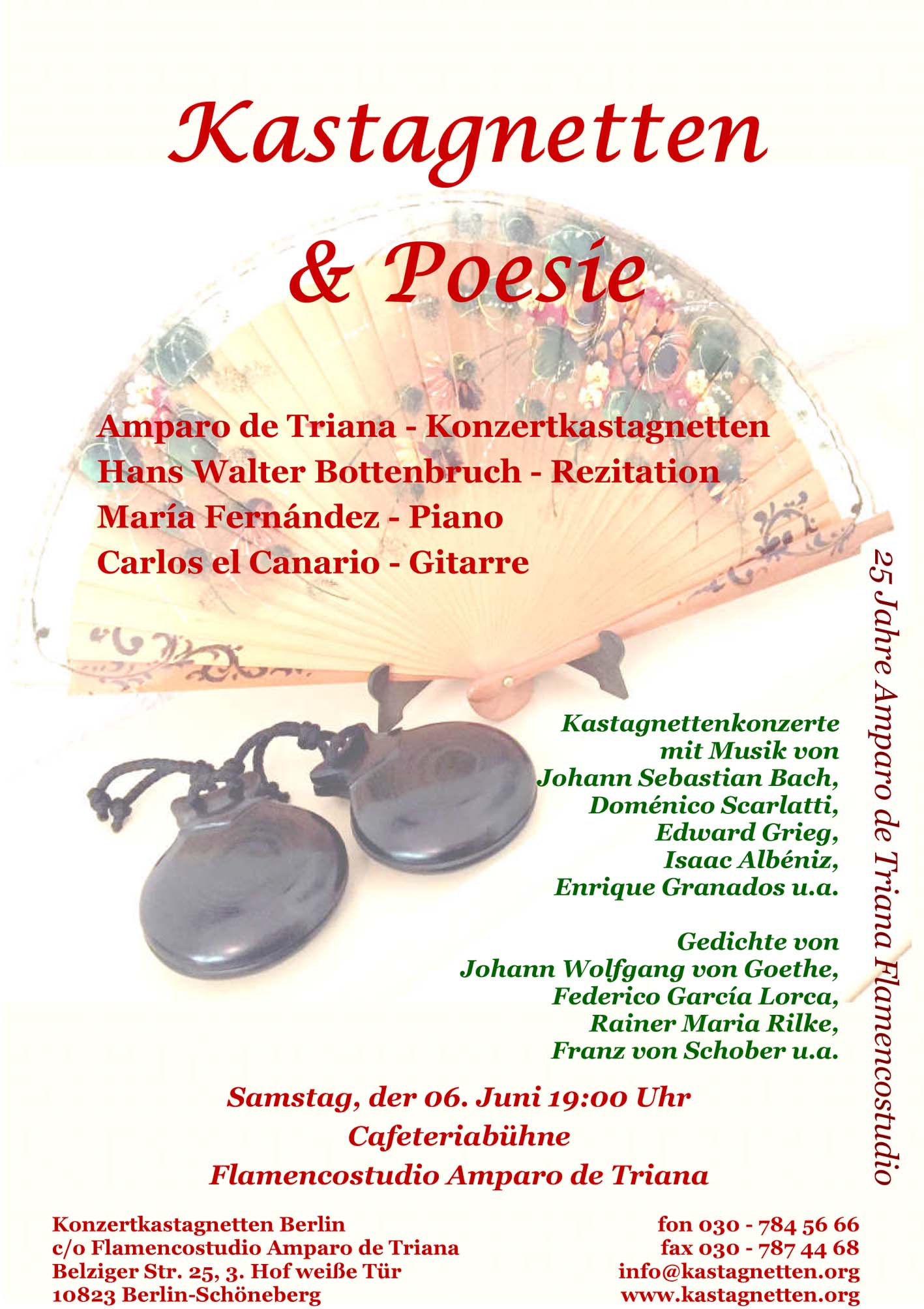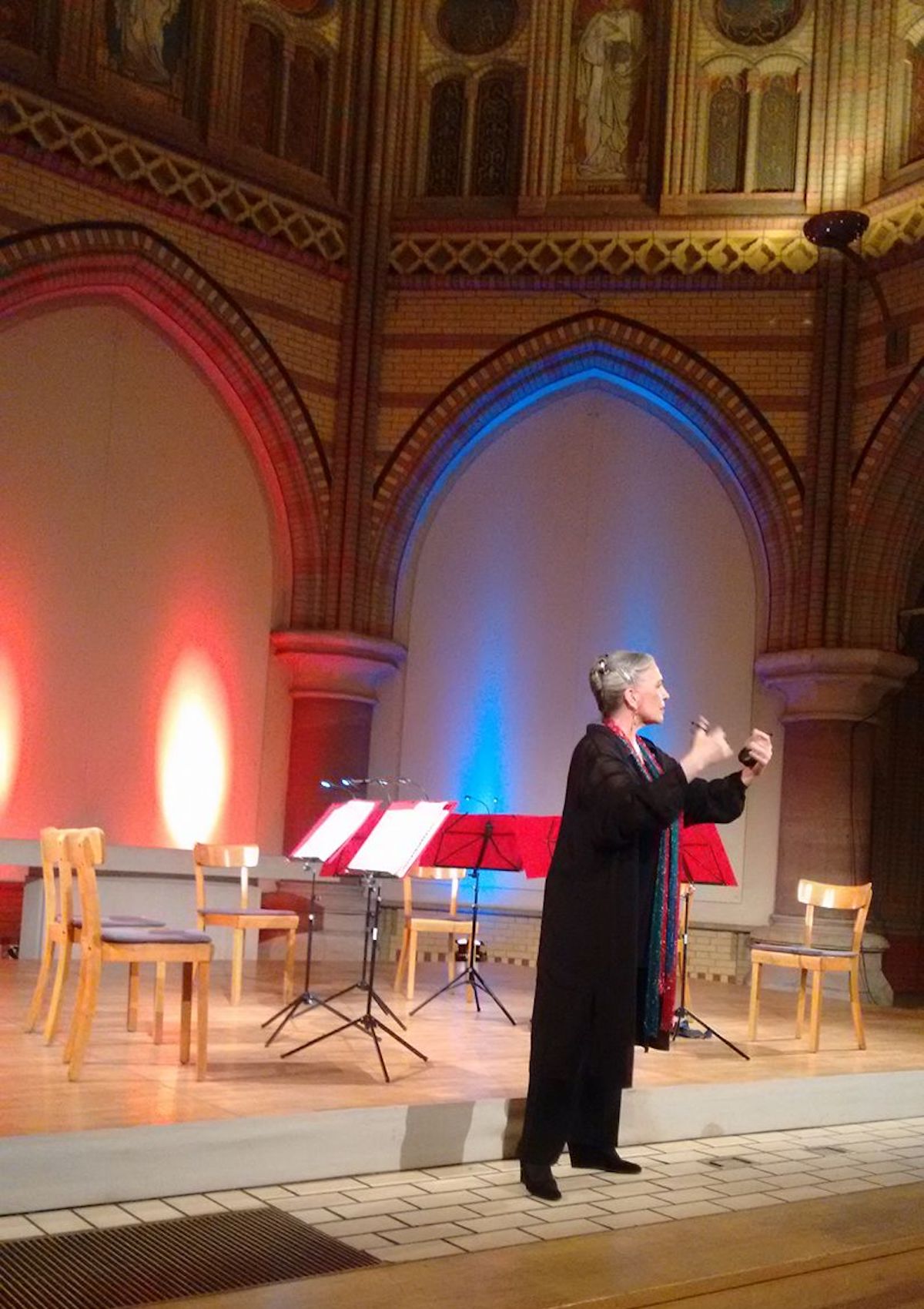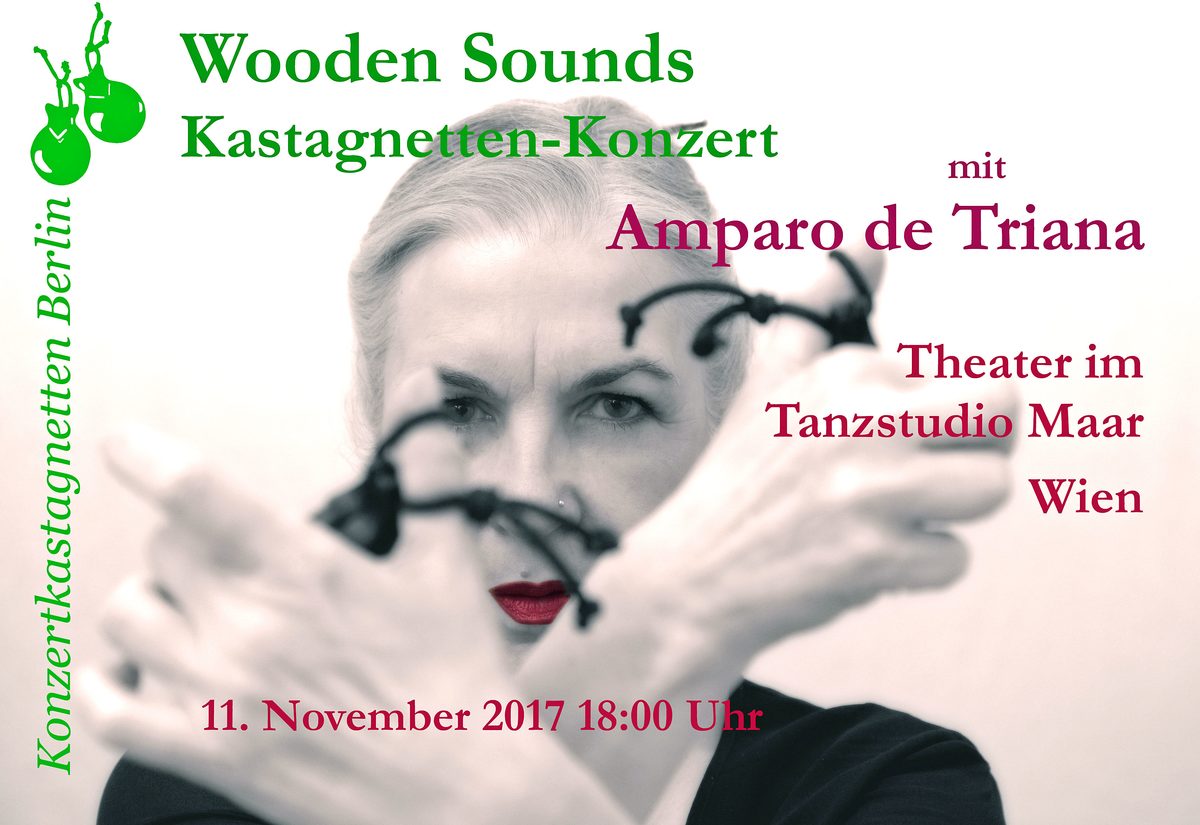To notate castanet parts, instead of the 5 lines, the pentagram of music notation, e.g. for a piano part, 2 lines are used, the so-called bigram.
The right castanet, ‘hembra’, has a slightly higher tone than the left one, ‘macho’. In the bigram for castanet notation, notes on the upper line are played on the right castanet and notes on the lower line are played on the left. Important: the neck direction of the notes determines the hand that plays. So, neck direction up means the right hand plays – partly also on the left castanet – and neck direction down means the left hand plays – partly also on the right castanet. This results in significantly expanded sound variations.
Further sounds can be produced with the ‘posticeos’. 2 notes standing together between both lines stand for a posticeo or choc. You gently and only by a small movement of the thumb strike the castanets together in different ways. There are many variations of the posticeo as well as all other beating techniques.
The advantage of this castanet notation, which according to my information was developed by Emma Maleras, is that one can write down everything with the signs common in music notation, i.e. rests, symbols, etc. and everyone who can read music can quickly orientate themselves.
But there are also special signs and agreements for the notation of the castanets, for example, 4 notes connected with a bar are always played from the little finger up to the index finger. By the way, we count the fingers for fingerings from the little finger of the right hand starting as 1 – without counting the thumbs – to the index finger of the left hand as 8. A single note without a fingering is always played with the middle finger.
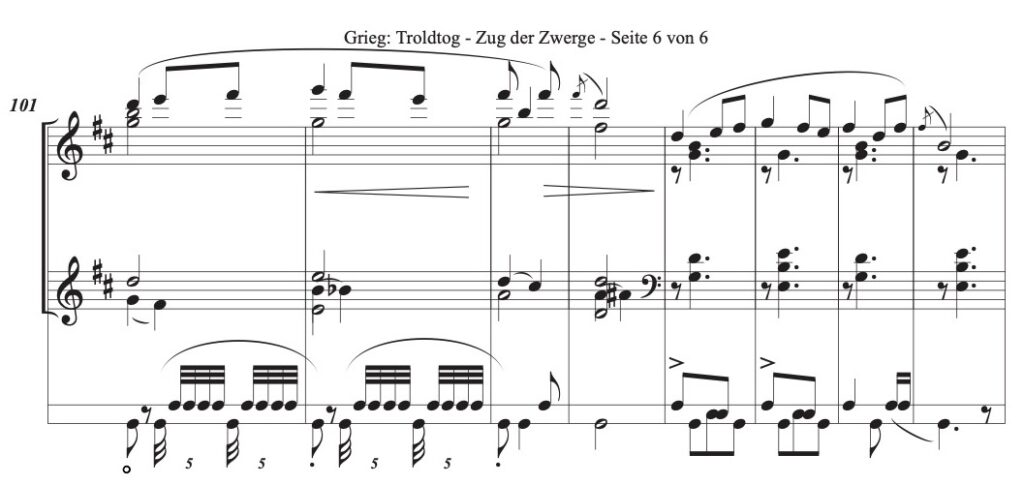
Excerpt from Grieg: Troldtog – castanet part: Amparo de Triana
With the concert castanets you get very versatile rhythmic possibilities, an incredibly rich variety of sounds and extensive musical expression. The castanets are a fully-fledged solo instrument and for their study, as for all instruments, one should undergo a profound and long-term training.
